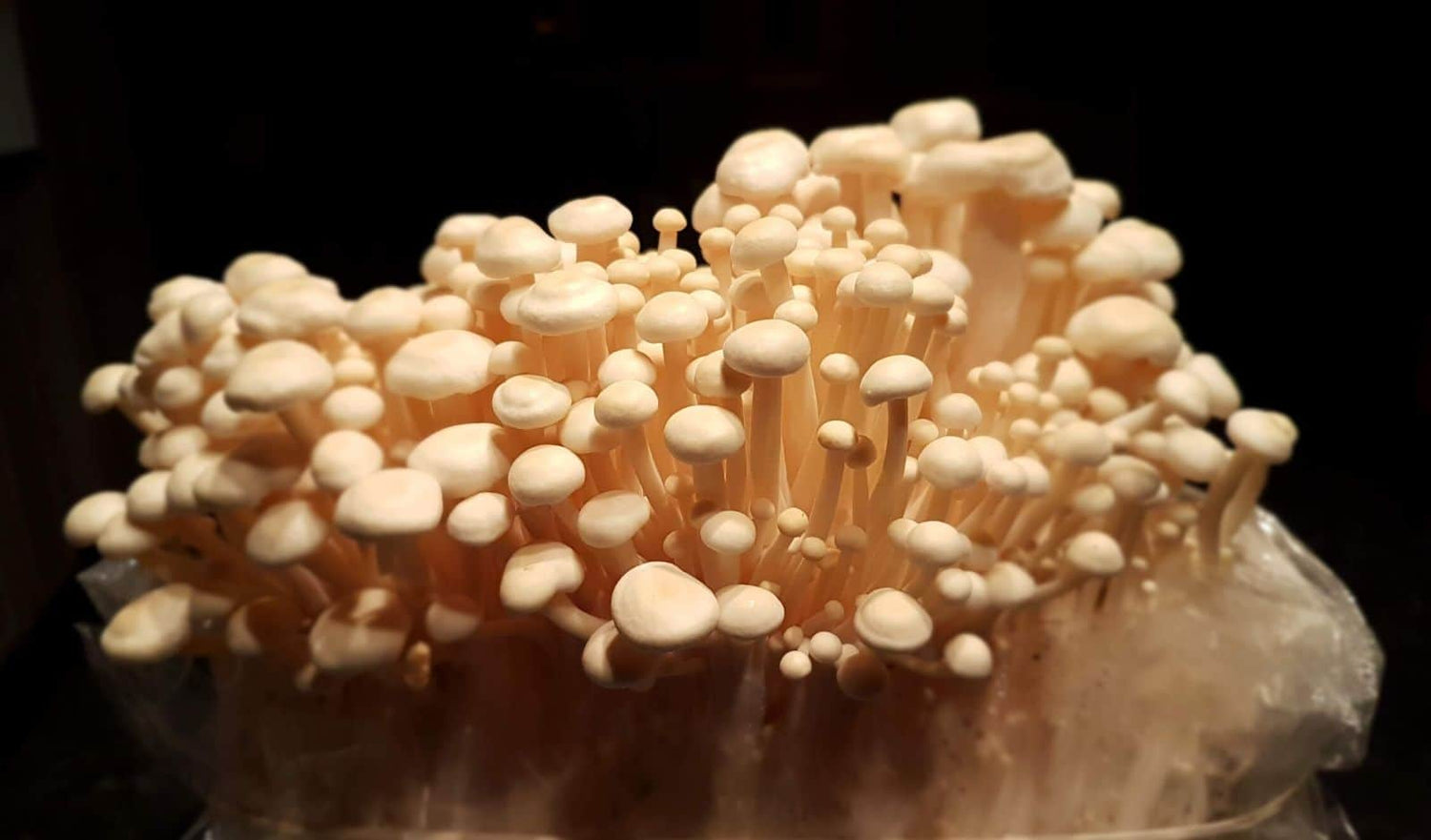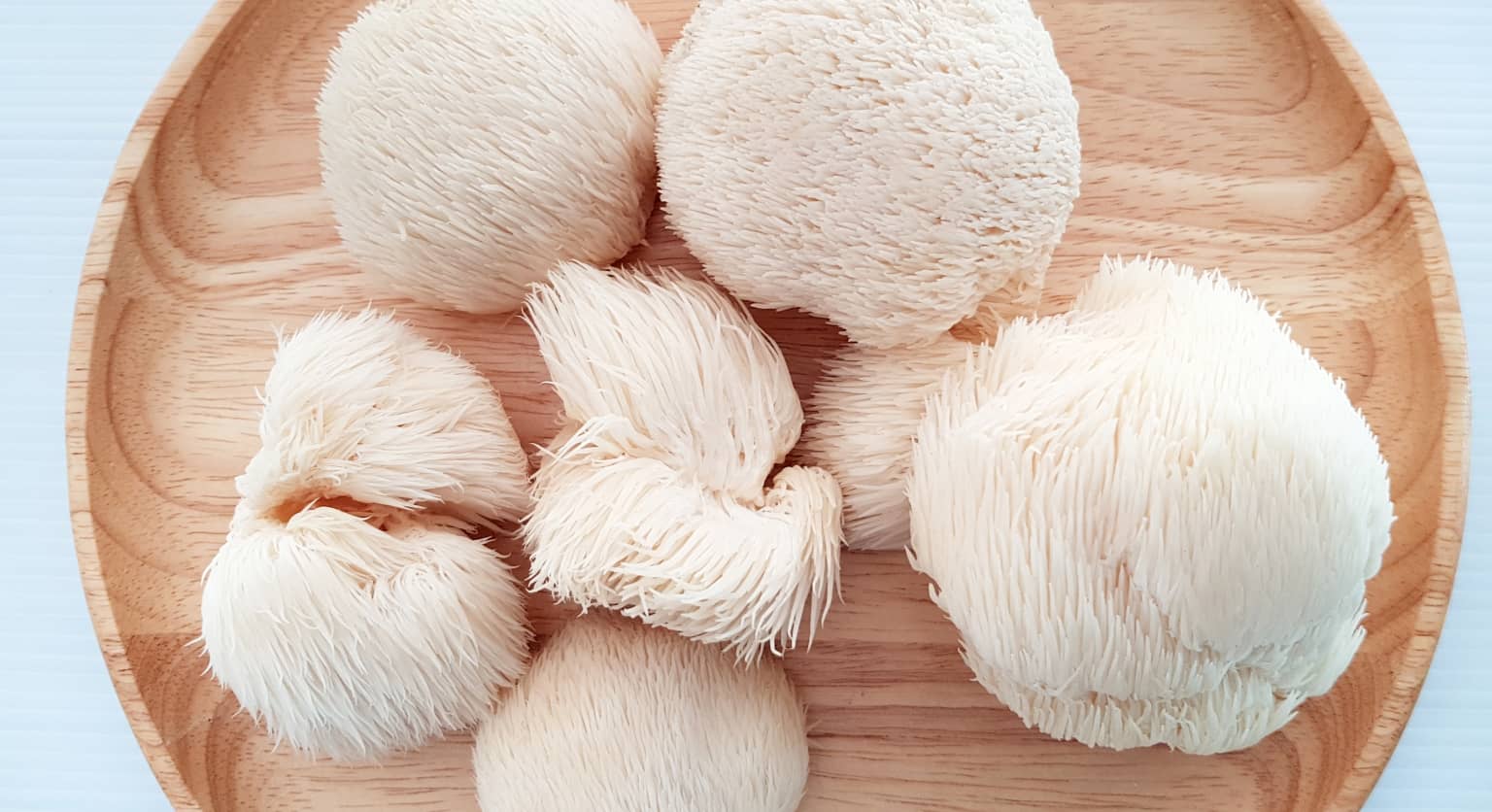If you’re just starting to learn about growing mushrooms, the process can seem overwhelming. There is so much to learn! Unfortunately, that can be a turn off for some people who are looking to get into the hobby.
The truth is, growing mushrooms can be as simple, or as complicated, as you want it to be.
I find it can be helpful to break down seemingly complex processes into simple steps.
That way, you can easily identify where you want to jump in, and how far you want to wade into the deep end!
LEVEL 1: Starting From A Kit

If you’ve never had any experience with cultivation before, the best place to start is by growing mushrooms from a kit.
This is by far the easiest way to tip-toe into the hobby, without the need to spend money on expensive equipment like a pressure cooker, or a fancy fruiting chamber. If I would have started this way, I probably would have saved myself from a ton of failed “experiments”!
Mushroom grow kits are essentially fruiting blocks that are already inoculated and colonized. Someone else has already done all the hard work for you, and you simply need to provide the right environmental conditions for the mushrooms to grow.
Doing so will help you get a better understanding of the mushroom life cycle, and what it takes for mushrooms to thrive.
Humidity
Humidity is arguably the most important aspect of mushroom cultivation. If mushroom kits do not have adequate humidity and moisture, they will fail to produce pins. Eventually the block will completely dry out and die. In most climates, you can’t just put the mushroom kit on your kitchen counter and expect mushrooms to grow. (That’s why they have so many poor reviews on Amazon) In order to pin, and continue to grow into substantial fruit bodies, mushrooms need a relative humidity of around 80-100%. For the pinning stage, you can get around this by cutting an “x” in the plastic of the mushroom grow kit, without exposing too much of the block. This will allow pins to form under the plastic, where relative humidity would be quite high. As the mushrooms continue to grow, make sure that the kit is placed away from strong drafts that could dry them out. You also need to make sure that you are misting your mushrooms multiple times daily with a spray bottle. If mushrooms get too dry while growing they might “abort” and fail to grow into large fruit bodies. Some people have had success by simply placing the kit in their bathroom- which is a naturally humid environment due to showering, bathing etc. You can also consider draping some plastic sheeting over your kit, forming a “humidity tent”, as long as you make sure the plastic has holes in it to allow for respiration. The easiest and cheapest way to ensure you maintain humidity for your grow kit is to build a simple “Shot Gun Fruiting Chamber”Light
Many beginners think that mushrooms need to grow in the dark. Although some mushrooms can grow in the dark (think button mushrooms), most gourmet species need light to grow properly. In fact, light is a key “pinning trigger”, a cue to the mushroom mycelium that it can begin to form a mushroom fruit body. But no need to go buy expensive grow lamps! Mushrooms need light for different reasons than plants. Indirect light from a window is perfectly suitable for normal mushroom growth. If you don't have a window with adequate light, you can use a simple rope light LED, or just leave a light on in the room with the mushroom block.LEVEL 1: What You Need
- A Mushroom Growing Kit
- Spray Bottle
- Build an SGFC
- Plastic Sheeting for Humidity Tent
LEVEL 2: Starting From Spawn

OK, so you’ve had success with a mushroom growing kit, and you understand the basics of what mushrooms need to grow.
It’s now time to grow mushrooms from pre-made spawn!
This next level allows you to explore different methods and substrates, grow mushrooms for fun or for profit, and play around with a ton of different species.
The possibilities are almost endless! With pre-made spawn, you don’t have to worry about culture management, or dealing with agar dishes. Just add the spawn to your substrate, colonize and fruit!
Growing Mushrooms on Low-Nutrient Substrates
Using pre-made spawn to grow on straw, or other low-nutrition substrates, is a great place to start. For this, you still don’t need a pressure cooker, autoclave, or laminar flow hood. You simply need to “pasteurize” the bulk material so that the mycelium from the grain spawn can get the upper hand on colonizing the substrate before contamination can get a foothold. One easy way to do this at home is to pasteurize your substrate in a large tote or cooler. Simply add hot water to the substrate, and leave it overnight. Once it cools, you can use can add your spawn! Another way to effectively “pasteurize” these kinds of substrates is to use Cold Water Lime Pasteurization. This is a heat-free method of preparing a substrate, and is even used extensively by many low-tech farms around the world. Good substrates for pasteurization are straw, coco-coir, and hardwood fuel pellets. These materials are naturally low in nutrition, but are still suitable for many types of mushrooms- especially oysters.Growing Mushrooms on Higher Nutrient Substrates
Some mushrooms, such as Shiitake, won’t grow on straw or coco-coir. They need more suitable substrates like sawdust supplemented with bran. Bran supplemented substrates are higher in nutrition, and need to be sterilized before inoculation with spawn. In this case, you’ll need a pressure cooker or autoclave. You’ll also have a hard time inoculating them without a laminar flow hood, although it can be done in a “still air box”.
Check out this article to learn all about the different ways to use pre-made spawn.
LEVEL 2: What You Need
- Pre-Made Spawn
- Low-Nutrient Substrates, like coco-coir or straw
- Mushroom growing container like grow bags, totes, or poly tubing
- Pressure Cooker
- Hydrated lime (for cold pasteurization)
LEVEL 3: Agar Work

If you’ve mastered the mushroom growing environment, and played around with different substrates and methods for substrate preparation-it’s time to get yourself into the laboratory...
This is where the real fun begins!
Perfecting agar work allows you to make your own grain spawn, save cultures for the long term, clone mushrooms from the wild, and even develop new strains from spores!
Again, you do not absolutely need a flow hood (most everything can be done with a “still air box”), but it definitely will make everything so much easier.
Making Your Own Plates
Doing agar work starts with making your own plates. The process generally involves pouring sterilized agar into petri dishes in front of a laminar flow hood. There are lots of different recipes for this, but a good one to start off with is a simple Malt Extract Agar recipe. It is suitable for almost all species. You can use plates to store cultures, propagate and expand your collection, and save new strains for future use. If properly stored and cared for, cultures can last for many many years before needing to be replaced.Making Grain Spawn
Once you have a viable culture on an agar plate, you can use it to make your own grain spawn from scratch. No need to ever buy grain spawn again! The process of making grain spawn isn’t for everybody… even some big farms prefer to buy spawn rather than make it themselves. But if you can get the process nailed down, it is 100% worth it in my opinion. It feels good to have control over the whole process- like you have your own cultivation super-powers.Making Liquid Cultures
You can use cultures on agar dishes as a way to start your own liquid cultures (LC’s). LC’s are advantageous, because they can be propagated without the use of a flow hood or even a SAB. If stored in mason jars with “self-healing” injection ports, you can use a syringe to extract the culture from the jar, and inject it into a jar of grain spawn or even a fruiting block. Liquid cultures in syringes are also a great way to send cultures in the mail. You can even buy culture syringes from various places online (like Mycelium Emporium) and use it to make your own jars full of LC cultures. You can grow your collection fast!Cloning Mushrooms
Ever see a beautiful looking species in the woods and think how cool it would be to grow it at home? You can do that with agar dishes! (depending on the species of course) Mastering sterile technique with agar dishes allows you to clone mushrooms at home, so that you find wild strains, make genetic copies of grocery store mushrooms, or even clone some of the more interesting fruits that you’ve managed to grow yourself.LEVEL 3: What You Need
- A Laminar Flow Hood
- Lab Equipment
- Cultures
- Much, much more...
- Honestly, it never ends. Go down the rabbit hole and you'll be finding more stuff to use for you "hobby" everywhere you go.
This is just the beginning.
The art of mushroom cultivation is a never ending pursuit of learning, trying, failing, and iterating.
The good news is, wherever you are on your mushroom growing journey, there is always more to learn!

